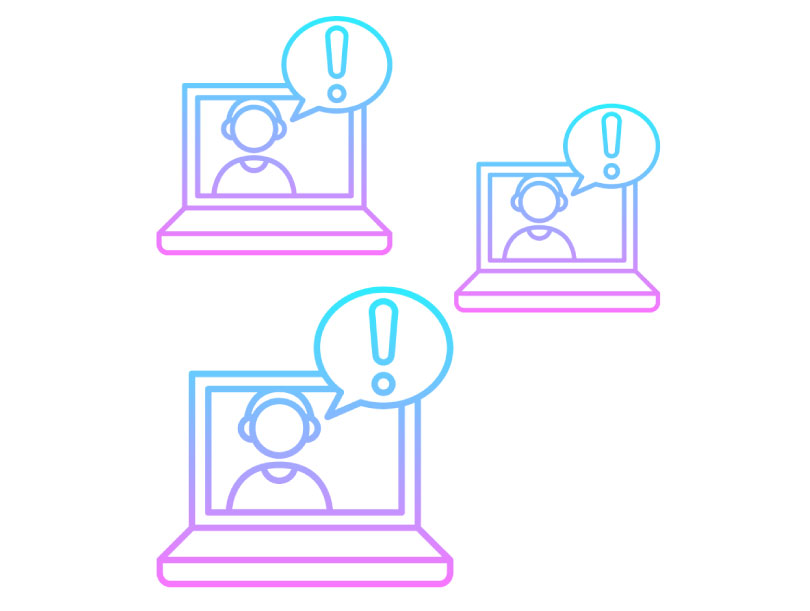Pull this lever of organization design to achieve better performance
Faced with the inevitable change and restructuring challenges that come with senior leadership, our clients frequently come to us with the same questions:

What is the ideal size of a team? How many people should report to one manager?
You’ve probably heard of Amazon’s infamous “two pizza team” rule that Jeff Bezos put forth, whereby team size should not exceed the number of people that can be fed by two large pizzas. Cute, right? But is there really one right answer about how big or small teams should be?
The truth is, defining “span of control” (SOC) is a little more complicated than something that can be boiled down to a simple axiom (or Doordash order).
The “right” SOC depends on a handful of variables: who the leader is, the size of the company, what type of work the team does, the cultural and operating environment, etc.
As a leader of teams, you’ll have to own decisions about the managing structure at your organization. Before you order a new set of stress balls, we’d like to offer this article as a resource to alleviate anxiety around “getting it right.”
This guide will go over some general guiding principles about span-of-control, as well as shed practical light on how to use this SOC lever in the context of your organization’s unique strategic goals.
Let’s get into some FAQs.
1. What is “span of control”?
Span of control (SOC) is typically defined as the number of people who report to one manager or supervisor. This is just the number of people who directly report to a single manager, and does not typically include the total number of people in the org hierarchy below that manager.
More broadly, span of control can also be defined as the number of subordinates who can be effectively supervised and managed (Haimann, 1970). Other names for span of control include span of supervision, span of responsibility, span of attention, and span of support (Bandiera, 2014).
2. How does span of control affect organizational outcomes? What are the consequences of a sub-optimal span of control?
- When a manager’s span of control increases, their people are less likely to ask them for direct feedback (Krasman, 2011). Qualitative data also shows that managers with a smaller SOC tend to interact more with their direct reports, making them better suited to provide coaching and support to their team. (+1 for Jeff Bezos’ pizza team theory.)
- Span of control is a strong predictor for manager turnover rates (Kraichy, 2019). To minimize ongoing manager turnover, organizations can benefit from redesigning their teams to have smaller manager-to-employee ratios. And this may seem obvious, but research shows that it’s of critical importance to fill vacancies promptly– especially when there’s going to be rippling effects on neighboring job demands and resources.
- A large span of control has been shown to negatively affect the quality of leader-member relationships (Schriesheim, 2000; Schyns, 2010; 2012), which in turn, can negatively affect organizational performance outcomes (Rockstuhl, 2012; Martin, 2016).
3. What is the optimal span of control for managers?
It might surprise you to learn that there is no consensus on what is considered a small or large span of control – helpful, right?
More frustratingly, you’ll find that the average span of control found in the management literature ranges from 9 to 77 people depending on which study you reference. Not really narrowing things down, is it?
At the risk of sounding like a broken record, at BOxD we know there’s no one-size-fits-all approach to designing the structure of an organization. And like most of the gnarly topics we help leaders tackle, it turns out… there is no magic number for a manager’s optimal span of control.

4. What factors should be taken into account when increasing a manager’s SOC?
OK, so there are no hard and fast rules for setting span of control. And you can see that there are all kinds of negative potential outcomes for increasing the span of control (yikes, post-layoff world!).
But there are key factors to examine that can help you decide whether an increased span of control is right for your managers:
- Higher employee autonomy and empowerment = wider span of control
Think about the key functions that your middle managers perform. They handle problems that people on their team can’t handle themselves (whether due to lack experience or domain expertise). They communicate information, coordinate activities, set goals, implement strategies, and develop their team members. The more developed your people are, the more you can afford to have fewer managers (wider span of control). When your people are more developed (more expertise, high level of structural and psychological empowerment), fewer line- and middle managers are needed and managers’ SOC can be increased. (See also: How to Become A Leader of Leaders guide for a chart that shows more details about people along a growth/development continuum) - Effective use of collaboration tools and technology = wider span of control
People with limited professional expertise and autonomy are going to require more support from their manager (smaller span of control). So another way to widen your span of control is through effective use of information and communication technology. We know this sounds basic, but it really does matter how and whether you’re using the full power of Al Gore’s internet! We’re talking email, video conferencing, project management tools, visual brainstorming software, intranet, and team information sharing tools… the whole kit and caboodle. So before you shrink the number of managers down, you need to assess whether you can adequately support people to quickly find and share information, help teams to coordinate their activities, and enable them to make decisions regarding planning, execution, and resource allocation. In other words, your ability to invest in good tech, tools, and training is directly proportional to your managers’ span of control.

If this sounds frustratingly open-ended, here’s a cheat-sheet for how to (roughly!) calculate the optimal span of control for your team(s):
| MANAGERIAL ARCHETYPE | MANAGER DESCRIPTION | LEVEL OF WORK COMPLEXITY | TYPICAL SPAN (# DIRECT REPORTS) |
|---|---|---|---|
| Player/coach |
|
|
3 to 5 people |
| Coach |
|
|
6 to 7 people |
| Supervisor |
|
|
8-10 people |
| Facilitator |
|
|
11-15 people |
| Coordinator |
|
|
15+ people |
Before you lean too heavily on the above chart, please take heed– there really is no such thing as an “ideal” span of control that remains agnostic to industry, company size, and leader profile. Increasingly we find that organizations perform better if they focus less on SOC and more on the quality of leader-member relationships (Zoller & Muldoon, 2020).
And in the end, leaders who can factor their peoples’ capabilities and support systems into design decisions are vastly better positioned to develop an appropriate reporting structure for their teams.
The good news is that you don’t have to go it alone, and you don’t have to wing it based on general trends or historical precedents. At BOxD we can help you make better design decisions about span of control at your organization.
Need help with restructuring? Drop us a note to get expert advice on what the optimal span of control looks like at YOUR organization.
SHARE THIS TOOL WITH A FELLOW LEADER
*Sources:
Bandiera, Oriana and Prat, Andrea and Sadun, Raffaella and Wulf, Julie M., Span of Control and Span of Attention (April 30, 2014). Harvard Business School Strategy Unit Working Paper No. 12-053, Columbia Business School Research Paper No. 14-22
Haimann, Theo and Scott, William (1970). Management in the Modern Organization. Houghton Mifflin Co., Boston MA
Kraichy, D., & Schmidt, J. (2019). Collective turnover: organization design and processes or contagion effects? Employee Relations, 42(2), 492-506.
Martin, R., Guillaume, Y., Thomas, G., Lee, A., & Epitropaki, O. (2016). Leader–member exchange (LMX) and performance: A meta-analytic review. Personnel psychology, 69(1), 67-121.
Rockstuhl, T., Dulebohn, J. H., Ang, S., & Shore, L. M. (2012). Leader–member exchange (LMX) and culture: A meta-analysis of correlates of LMX across 23 countries. Journal of applied psychology, 97(6), 1097.
Schriesheim, C. A., Castro, S. L., & Yammarino, F. J. (2000). Investigating contingencies: An examination of the impact of span of supervision and upward controllingness on leader–member exchange using traditional and multivariate within-and between-entities analysis. Journal of Applied Psychology, 85(5), 659.
Schyns, B., Maslyn, J. M., & Marc, P. M. v. V. (2012). Can some leaders have a good relationship with
many followers? Leadership & Organization Development Journal, 33(6), 594-606.
Schyns, B., Maslyn, J. M., & Weibler, J. (2010). Understanding the relationship between span of control and subordinate consensus in leader-member exchange. European Journal of Work and Organizational Psychology, 19(3), 388.
Zoller, Y.J. and Muldoon, J. (2020), “Journey of a concept: span of control – the rise, the decline, and what is next?”, Journal of Management History, Vol. 26 No. 4, pp. 515-533.
How to identify the right ‘spans of control’ for your organization | McKinsey
 Ready to Talk Now?
Ready to Talk Now?